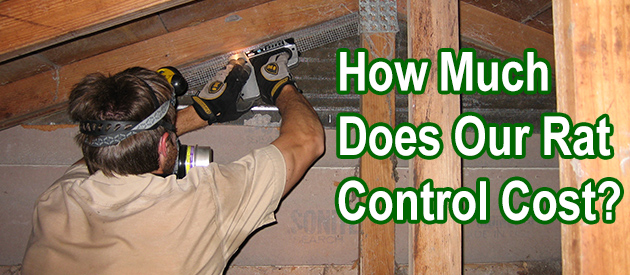Fairfax County, Fairfax County Rat Control Situation:
Hi David, Came across your web page and thought i would ask you some rat advice. We bought our home 2 years ago and we renovated for 2 months, so no one lived here for those two months. When we moved in, maybe about a week into living here, our bedroom bathroom had a rat in the toilet. I was in there cleaning, heard water splashes in the toilet and bam a rat, after about 30 flushes it went back down and we never saw a rat around again. Today, I'm walking down my hallway, I hear splash in the hallway bathroom toilet and there I see the rat peaking its head out. I close the lid and again I flushed it about 20 times. Currently waiting for the boyfriend to get home from work to handle the rest. What is your advice? We have a 3 year old daughter who constantly is using the restroom on her own, and it makes me sad that I now feel like I have to a toilet check before we let her use it. Do we have a rat problem? Plumping problem? Thank you for your time and any advice.
Hi David, I live in Fairfax County VA. When my husband was alive we seemed to be able to control the rats (for periods of time) in our non-insulated crawl space in our ceiling. We used the rat zappers and would kill 4 or 5 in about a weeks time and have months with no scampering in and out. Now, they are back and just aren't going for the zapper (bait remains untouched). So, I read your website and will try to find trails and buy some snap traps. It is difficult crawling up there as the ceiling tiles are not that strong and I would have to remain on the beams or fall through. Before we would be able to lure and catch them close to the ceiling hatch access. No such luck now. I hear them scamper in on the living room ceiling, be quiet all day and scamper out same way coming from the opposite side of the house. In other words, they seems to run the length of the house. My husband used to try and find outside access but had no luck. I am 68 years old and some what hesitant on the ladder. I could not find wildlife removal agencies on this Island except through regular Wildlife Control type agencies and I'm not sure how knowledgeable they are. So, maybe you have some ideas or will happen to be vacationing in the area soon. Ha, ha. There are tons of macadamia nut orchards and avocado trees on this street, so, rat heaven. I would appreciate any suggestions you may have,
Hi, thanks for your helpful info on your website. Do you know how to detect where the rat urine is? Or should I spray everywhere?
Fairfax County Rat Control Tip of The Week
Different Types Of Rat Snap Traps
Spring traps for big rodents, such as rats or squirrels, are powerful enough to break the animal's neck or spine. They may break human fingers too, while a customary spring-based mousetrap is probably not going to break a human finger. Rat spring traps may not be sufficiently delicate to spring when a mouse takes the bait.
A rat cage trap is a metal enclosure box-shaped gadget that is planned principally to get rats without killing them. Food bait (not poisoned) is placed in the cage trap. When an animal gets into the cage and moves towards the bait, the component triggers and shuts the door. The animal is caught alive and without injury. The animal can be relocated somewhere else or killed subsequently.
Glue traps are non-poisonous sticky glue that are spread over card sheets and kept in places rats visit, which gets them stuck to it when they pass over it. The rat will die from dehydration and suffocation. A bait may likewise be set on the cardboard to attract the rats.
Another type of non-deadly trap is where the wires used in its construction are cut and framed into a funnel shape directed to the cage's body. This design is usually dome-shaped with the funnel at the crown. Rats are very adaptable and can push through the smaller opening into the confine, but can't escape because of the closures of the wires poking them in the face. The advantage of this design is that it can catch more than one rat in a setting.


